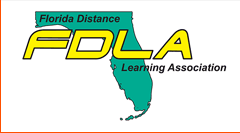Research in distance education: Trends observed in the Quarterly Review of Distance Education from 2002 to 2017
Start
1-30-2019 10:30 AM
End
1-30-2019 11:45 AM
Short Description
Presenters share findings of a study that illustrates the areas of research focus in distance education from 2002 to 2017, as viewed through the lenses of publications in the peer-reviewed journal, the Quarterly Review of Distance Education. They used Zawacki-Richter’s validated classification of research areas in distance education to guide their analysis. They also discuss the robustness of this classification for this purpose and invite discussion on its usefulness in classifying possible future research in distance education.
Abstract
The mapping of research trends and identifying areas of focus and gaps in academic research, is done by analyzing research publications in academic journals in a particular field over a specific period of time. For example, in the field of distance education, Lee, Driscoll, and Nelson (2004) mapped academic publications in four prominent journals in distance education between 1997 and 2002 to identify the current research trends and to recommend areas for future research. Zawacki-Richter and Naidu (2016) and Zawacki-Richter, Alturki and Aldraiweesh (2017) conducted similar studies, but focused on publications in specific journals, Distance Education in the former, and the International Review of Research in Open and Distance/ Distributed Learning in the latter.
In their study, the presenters used the peer-reviewed journal, the Quarterly Review of Distance Education (QRDE), a journal probably familiar to many attendees of this conference. QRDE was started in the year 2000 by distance education faculty at Nova Southeastern University in South Florida. The presenters analyzed abstracts of 411 research articles published in QRDE from 2002 to 2017 using qualitative content analysis. Zawacki-Richter’s (2009) validated classification of research areas guided their analysis. This classification consists of three main levels (i.e., macro: distance education systems and theories; meso: management organization and technology and micro: teaching and learning in distance education) and 15 categories. The researchers share where their sample of research publications fall within this classification and highlight those research publications that did not. Based on their findings, the presenters conclude on the robustness of this classification for their sample of research conducted in distance education from 2002 to 2017. They then invite the audience to participate in discussing the applicability of the Zawacki-Richter classification of research ideas for future research in distance education.
Format
Concurrent Session
Institutional level targeted
Higher Ed
Research in distance education: Trends observed in the Quarterly Review of Distance Education from 2002 to 2017
The mapping of research trends and identifying areas of focus and gaps in academic research, is done by analyzing research publications in academic journals in a particular field over a specific period of time. For example, in the field of distance education, Lee, Driscoll, and Nelson (2004) mapped academic publications in four prominent journals in distance education between 1997 and 2002 to identify the current research trends and to recommend areas for future research. Zawacki-Richter and Naidu (2016) and Zawacki-Richter, Alturki and Aldraiweesh (2017) conducted similar studies, but focused on publications in specific journals, Distance Education in the former, and the International Review of Research in Open and Distance/ Distributed Learning in the latter.
In their study, the presenters used the peer-reviewed journal, the Quarterly Review of Distance Education (QRDE), a journal probably familiar to many attendees of this conference. QRDE was started in the year 2000 by distance education faculty at Nova Southeastern University in South Florida. The presenters analyzed abstracts of 411 research articles published in QRDE from 2002 to 2017 using qualitative content analysis. Zawacki-Richter’s (2009) validated classification of research areas guided their analysis. This classification consists of three main levels (i.e., macro: distance education systems and theories; meso: management organization and technology and micro: teaching and learning in distance education) and 15 categories. The researchers share where their sample of research publications fall within this classification and highlight those research publications that did not. Based on their findings, the presenters conclude on the robustness of this classification for their sample of research conducted in distance education from 2002 to 2017. They then invite the audience to participate in discussing the applicability of the Zawacki-Richter classification of research ideas for future research in distance education.

